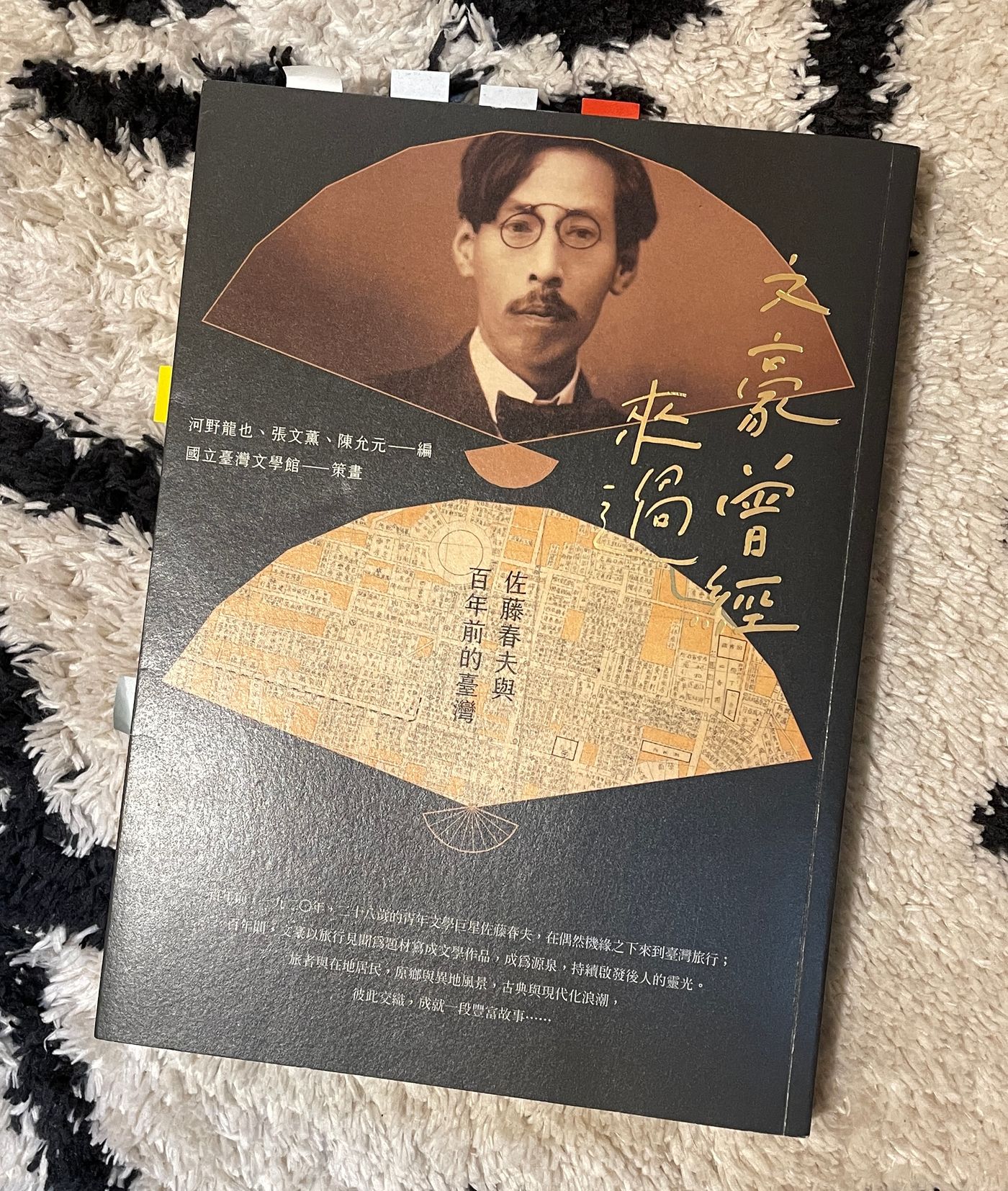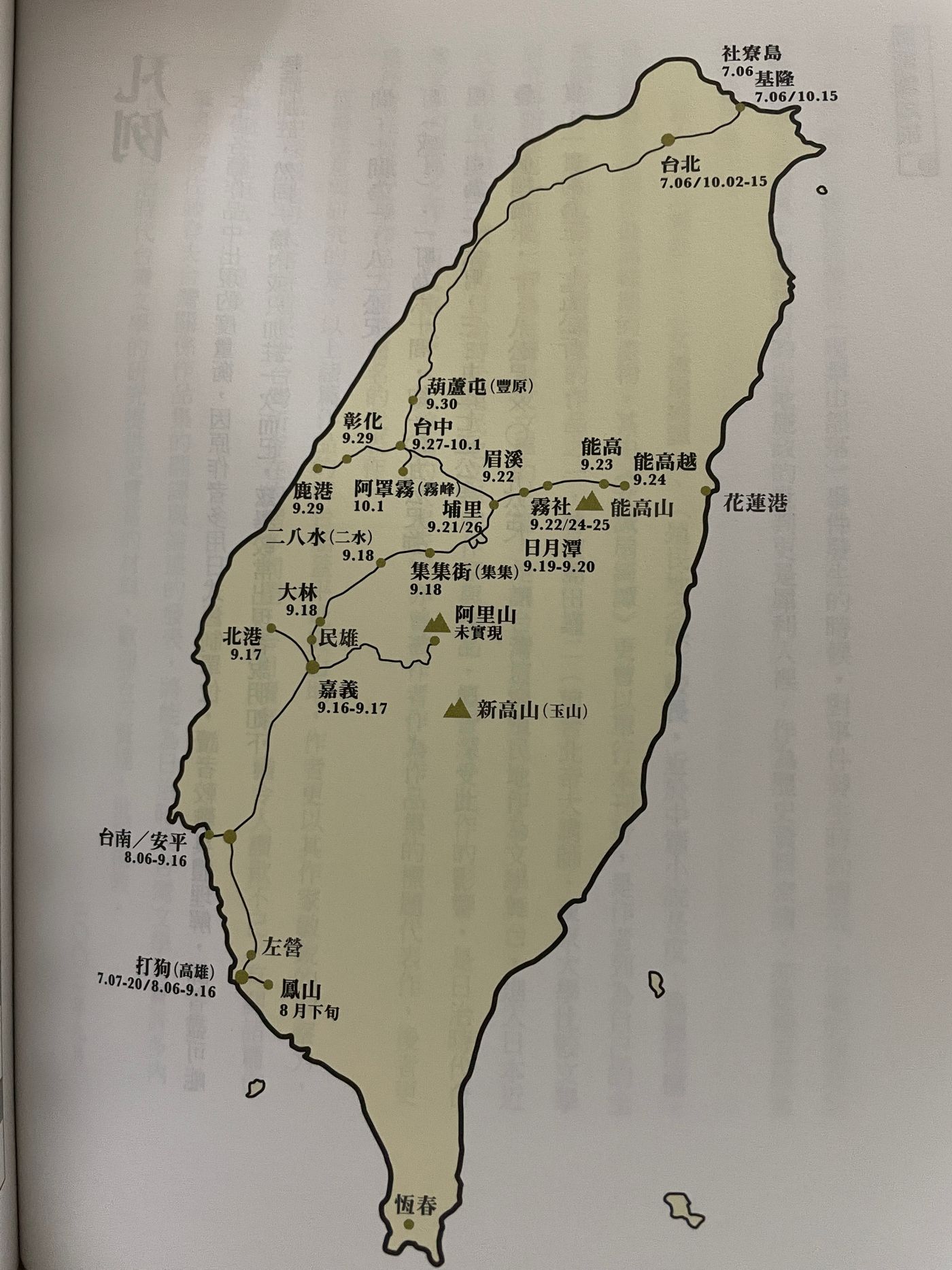Love hurt journey
Last week, when I introduced Teacher Pan Guoling's new book "There is Always Some Time on the Road", I "gently" touched on the topic of love and travel. This time I want to continue this topic.
During the Japanese occupation period in Taiwan, there was a writer who came to Taiwan for a few months due to emotional injury, and wrote more than ten novels and travel notes based on this trip. He is Haruo Sato.
The name Sato Haruo is not as familiar in Hong Kong as his contemporaries, Dazai Osamu, Akutagawa Ryunosuke, etc., but he has a great background. His master was Junichiro Tanizaki, a famous Japanese writer. However, this pair of master and apprentice fell into a tangled love triangle, and even "broken off".
It turned out that Tanizaki was not only a great writer, but also a man who had changed his mind. It happened that Chiyo's younger sister せい子 (sometimes called Seiko) lived in Tanizaki's house. Tanizaki fell in love with her and pursued her because of her cheerful personality. Meanwhile, Sato discovers that his wife is having an affair with his brother. On the one hand, Sato hoped that he could forgive them; on the other hand, he felt sympathetic when he saw the situation of his wife, but he wanted to suppress this feeling, which made him nervous, so he could only "walk away and relax."
Back in Japan, there were certainly many places where people could "walk and relax". Why did Sato choose Taiwan, a Japanese colony? This is because Dongxi City, a middle school classmate, lives and practises medicine in Taiwan and returns to his hometown to raise funds for the construction of a new hospital. This friend strongly invited Sato to visit Taiwan, so that Sato, who was entangled in family, friendship and love relationships at that time, traveled across the ocean to Taiwan and Fujian, China in 1920.
~~~~~~~~~~~~~
In 2020, the National Taiwan Museum will hold a "Centennial Week - Sato Haruo 1920 Taiwan Literature Travel Exhibition" for the 100th anniversary of Sato's visit to Taiwan. They convened experts from Taiwan and Japan to analyze Haruo Sato's "Taiwanese works" in depth.
The books I want to introduce this time are "The Writers Have Been Here: Haruo Sato and Taiwan A Hundred Years Ago", which collects exhibitions, pictures, and the research results of experts, and "Journey to Colony", which is a collection of Haruo Sato's work on Taiwan.
According to the introduction in the book "Bungaroo Has Been Here: Haruo Sato and Taiwan A Hundred Years Ago", the author departed from Shingu (Wakayama Prefecture) on June 24, 1920, passed through Hiroshima, and boarded the passenger ferry Bingo Maru at Shimonoseki in early July. , arrived at Keelung Port in the early afternoon of July 6. Wenhao's entire trip is about 4 months. Except for Xiamen, Fujian and Gulangyu on the other side on the 16th, he spent the rest of the time visiting northern Taiwan to central and southern Taiwan.
In addition to introducing the itinerary, this book also describes what Sato saw and heard during his travels in Taiwan, including his trips to Wushe, Nenggaoshan, Sun Moon Lake, Lukang, Wufeng, Jiji, etc. Among them, on the trip to Wushe, Sato encountered the local Salamao incident; when he went to Wufeng, he had a conversation with Lin Xiantang, the most famous family in Taiwan at that time. In addition, it also introduces the historical background, transportation construction, cultural conflicts, analysis of works, etc., and also reviews the author's writing techniques for some works. It will undoubtedly help a lot to read this book before reading "Journey to Colony".
Some of the scenic spots that the writers have visited, some of which I have visited, are all beautiful. However, what Sato saw, in addition to the beautiful scenery, was the cruel reality of the aborigines being squeezed by the Japanese: forced labor, brainwashing education, and marriage with Fans. A person who originally went to Taiwan to "walk and relax" should heal his emotional wounds by traveling in the mountains and waters. In the end, under the itinerary arranged by his friend Mori Chou Nosuke, he learned about the "real situation" in Taiwan. He once recounted that in Jiji, he heard that the Japanese in Wushe were killed by the aborigines. make him worry.
There is a reason for Mori Unosuke's arrangement. It happened that after Sato and his classmate Dongxi Shi arrived in Taipei, they immediately went to visit the acting curator of the Taiwan Governor's House Museum Mori Chounosuke, and took this opportunity to receive special treatment from the Governor-General's Office, Hiro Shimomura, and arranged for him to enter the mountains. Of course, the Governor's Office also hopes to use this writer to help promote Taiwan and attract Japanese to invest in Taiwan. As for Mori Chounosuke, he hoped that by arranging the itinerary, let the writers experience, so as to write a policy of criticizing the governor's office.
These travel experiences of Wenhao have become the subject matter of his later works.
~~~~~~~~~~~~~
On October 15, Wenhao finally boarded the ship and returned to Kobe, Japan.
Did this trip help Wenhao? According to information: First of all, Sato divorced his wife. Afterwards, Sato resolutely represented white to his wife Qian. How did Master Tanizaki react? He didn't get angry with his apprentice, because at that moment he wanted to divorce Chiyo, then he could marry せい子, so "happy" let Sato pursue Chiyo. However, after せい子 regretted the marriage, Tanizaki asked Sato to "return" Chiyo. The two teachers and apprentices broke off friendship, and this is the beginning and end of the "Odawara Incident". [Note 1]
Why after the trip, not only can Sato get out of his emotional pain, but also dare to face himself frankly, and then pursue his love? I thought, maybe this trip allowed him to see another group of people facing the oppression of life and the oppression of the government. When comparing the matter of love and life and death, perhaps the former is insignificant; perhaps it is more necessary to seize the time to pursue one's own happiness.
However, Sato fell into pain again after the "Odawara Incident". This time, instead of traveling again, he used a pen to write and began to write poems. He wrote representative lyric poems such as "The Collection of Poems for Love" and "The Song of the Saury". Some commented that Sato's actions were clearly a "demonstration" against Tanizaki. One of them is this:
〈Or るとき人和へて〉
かた片こひの身にしあらねどわが德しはただこころづまWifeこころWifeこころにいだどわがしはただこころづまWifeこころこころにいだきいねがてのわがふゆ Winter noye.
は は は り か し な し う つつ よ よ よ おそろ おそろ し き おそろ おそろ こころ こころ ひと ひと に て も も も の の きふるひ の きふるひ の 夜 ひと ひと り ひと ひと ひと り ひと
"sometime to someone"
Although it is not unrequited love, what I get is only the wife of the soul, the wife of the soul embraces my winter night, which is difficult to sleep, with the heart.
Reality is more illusory than reality The dream is more terrifying than the dream. [Note 2]
Will Sato and Chiyo have a lover and get married? The answer is: In 1926 , Tanizaki and Sato reconciled, and in August 1930 , Tanizaki, Chiyo and Sato jointly sent a letter to relatives and friends to announce to everyone that Tanizaki and Chiyo divorced and married Sato.
Finally a happy ending.
(to be continued)
~~~~~~~~~~~~~
Extended information:
[Note 1] "I was dumped by Seiko, you should return my wife to me" Japanese Bunhao - Tanizaki Junichiro's Absurd Love History
https://everylittled.com/article/154824
[Note 2] "Ayako Mandala: Selected Classic Works of Haruo Sato"
"Bungo once came: Haruo Sato and Taiwan a hundred years ago" (from blog) https://www.books.com.tw/products/0010868232



Like my work? Don't forget to support and clap, let me know that you are with me on the road of creation. Keep this enthusiasm together!
